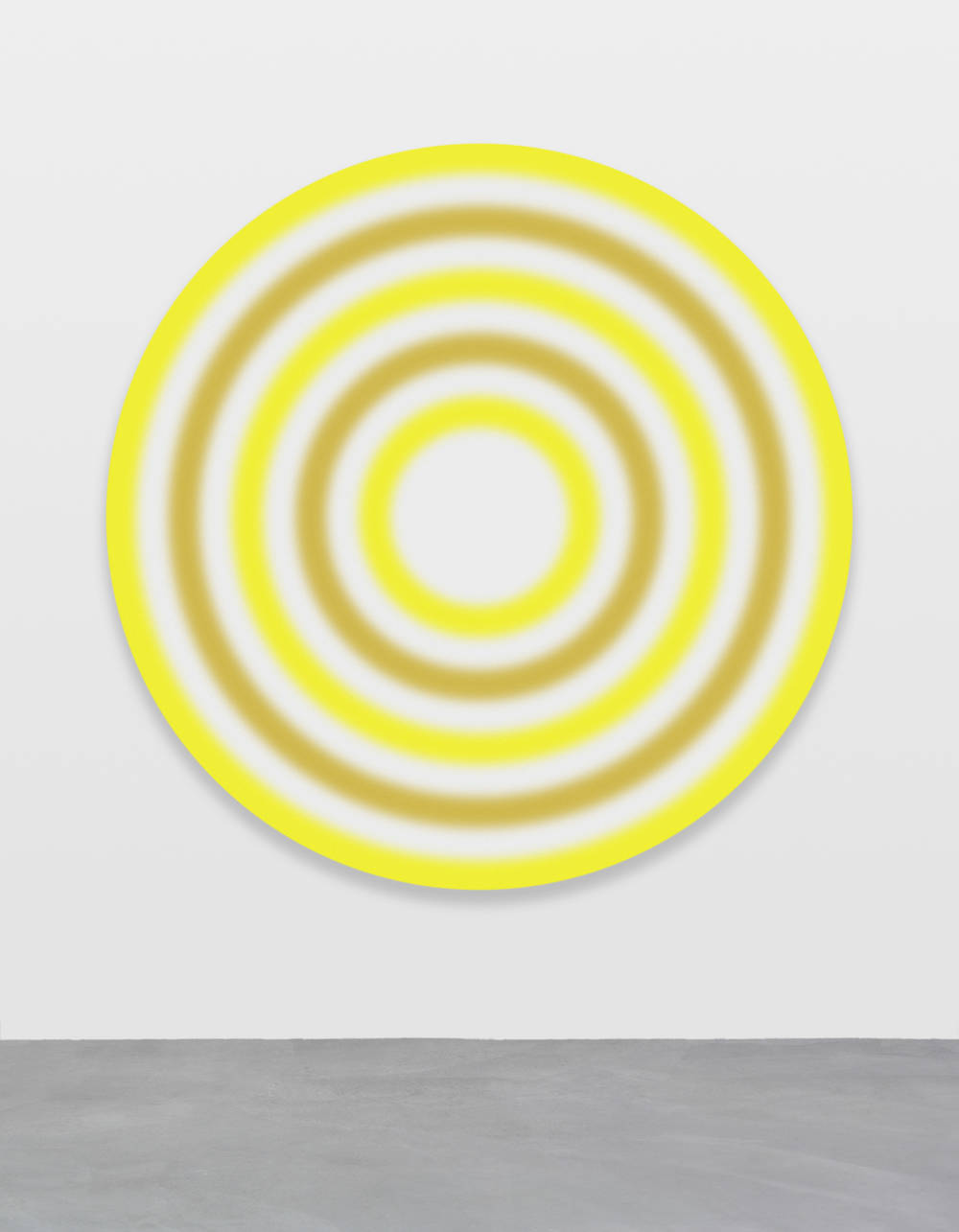From June 24 the Schirn will dedicate the first major survey exhibition in Germany to the Swiss artist Ugo Rondinone. A first insight.
“LIFE TIME” presents from June 24 to September 18, 2022 key paintings, sculptures, and video works by the Swiss artist Ugo Rondinone, who is one of the internationally best-known of his generation. In his works, he adds a poetic dimension to everyday things and phenomena. A tree, a clock, the sun or a rainbow – by means of repetition, isolation or reduction, he positions them in new contexts in his typically rather minimalistically arranged spaces, creating atmospheric ambiences.
Specifically, for the Schirn, he groups around eighty of his works into new constellations and sequences, creating a unique installation that extends along the entire length of the gallery, into the Rotunda, and onto the roof. Also, the artist developed curved standing landscape with entry door (2022), a monumental sculptur made of soil. Hundreds of children have also drawn moon pictures especially for the exhibition, which can be seen as a separate installation - the "world's largest night sky" is being created.
themes that have shaped Ugo Rondinone’s work for the past thirty years
“LIFE TIME” combines essential themes that have shaped Ugo Rondinone’s work for the past thirty years: time and transience, day and night, reality and fiction, nature and culture. Central aspects in the work of the conceptual and installation artist are the principle of the series and the variation of motifs in various media. In his works, Rondinone returns time and again to the iconography of Romanticism, weaving it into a dense fabric of art history, literature, and pop culture. The starting point of his multimedia oeuvre is the transformation of the outside world into a subjective, emotional inner world. He devises experiential spaces in which space and time disappear in the individual rhythm of perception and the viewers themselves become part of the installations.
The viewers themselves become part of the installations
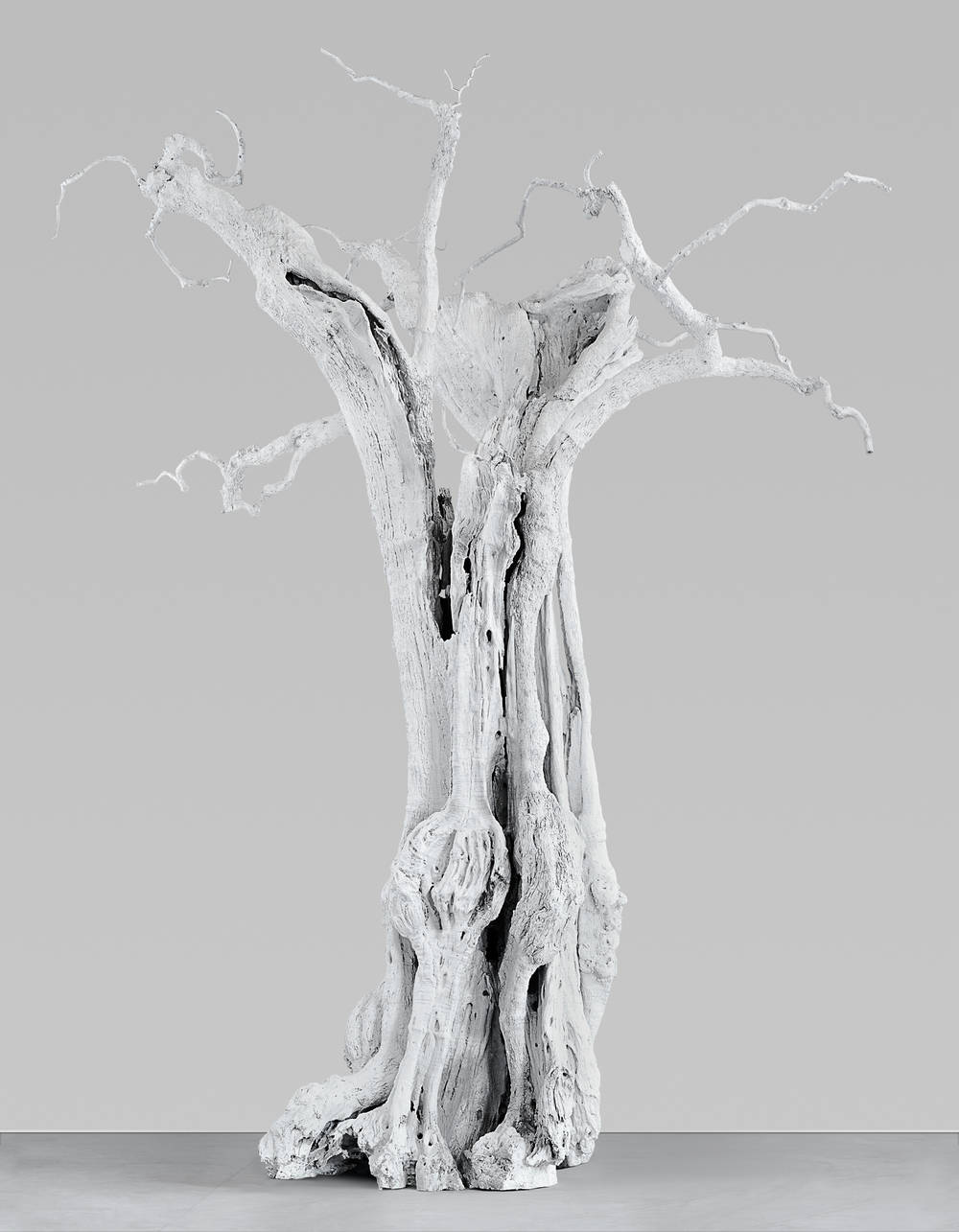
Installed on top of the roof, the rainbow “life time”, consisting of two curved words, can be seen from afar. The large illuminated letters that form the title, as art in public space, are intended to reach as many people as possible. Rondinone’s rainbows explore themes such as day and night, homosexuality, freedom and tolerance, and, in the case of “life time”, the own lifetime and the enduring presence of a work of art.
“Time” is also relevant in the six-meter-high sculpture “Flower moon”, displayed at the center of the publicly accessible outer area of the Rotunda: it is a white enameled aluminum cast of a two-thousand-year-old olive tree that dominates the cylindrical architecture of the site, is an expression of a memory that seems insignificantly small in the context of the universe. On the outward-facing glazing of the Rotunda’s circular walkway, a brick wall is painted in white: light enters only through the transparent joints, interrupting the Rotunda’s characteristic view both in and out.
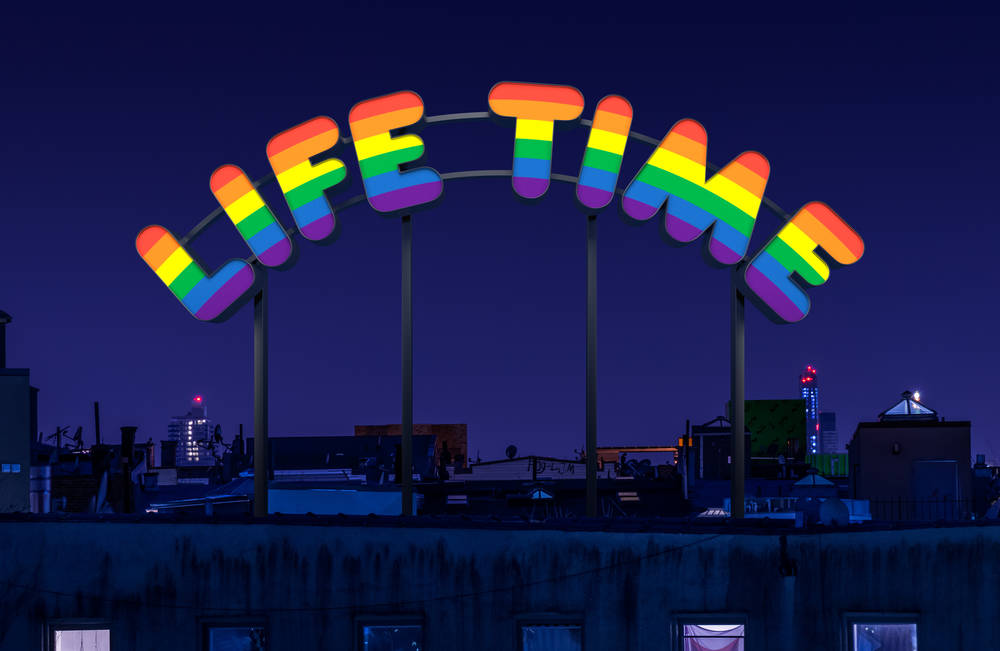
The main part of the exhibition is divided into five sections that extend across the entire gallery of the Schirn
A narrative unfolds that follows the transition from night to day, from darkness to light. The first and darkest room includes works from four series. The clown lying on the floor is part of a group of eight clown figures, collectively titled “if there were anywhere but desert.” after a book of poems by Edmond Jabès. These are all casts of actual people. The clown presented at the Schirn wears the mask of Pierrot, considered sad and melancholic, and refers to the latter’s Romantic phase in the Commedia dell’Arte
The sculpture is surrounded by seven large-scale images of stars, in which Rondinone picks up archetypal phenomena with the help of sand and stones. The clown and star images are complemented a black wooden door shutting out the rest of the world and a mask made of rubber. “moonrise” leans on to masks of the Indigenous Yupik people from Alaska, whose spiritual way of life is based on the phases of the moon.
Works specially developed for the Schirn
In the next room, dominated primarily by brown tones, is the site-specific sculpture "curved standing landscape with entry door" mentioned at the beginning: the monumental wall made of a special mixture of soil follows the curve of the Rotunda’s architecture like a vertically tilted piece of natural ground. This, too, reflects Rondinone’s basic principles: a piece of the environment outside is brought inside, where reality becomes fiction and nature becomes art.
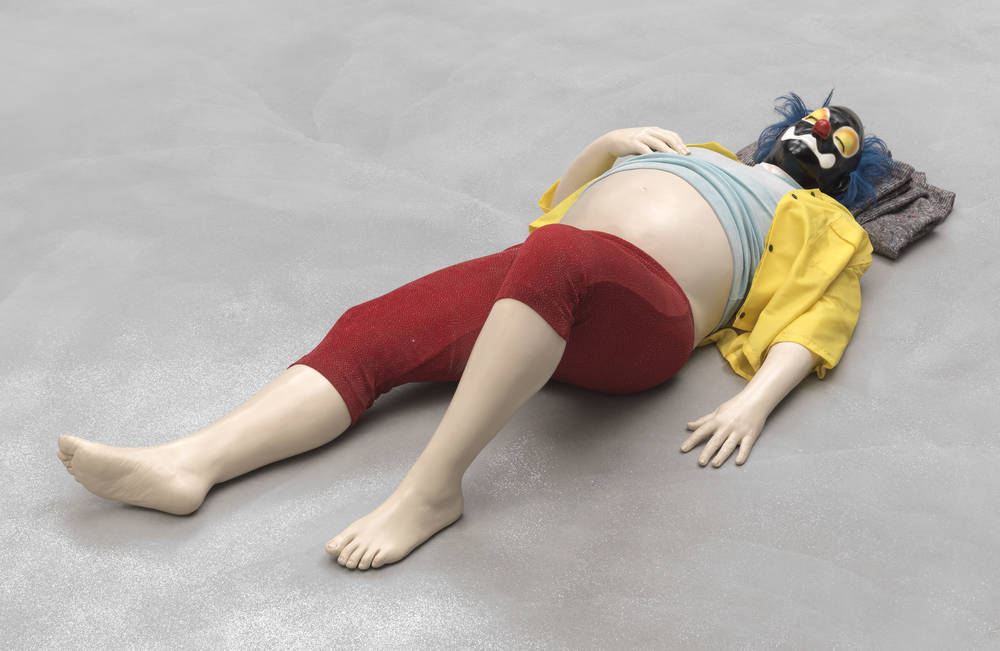
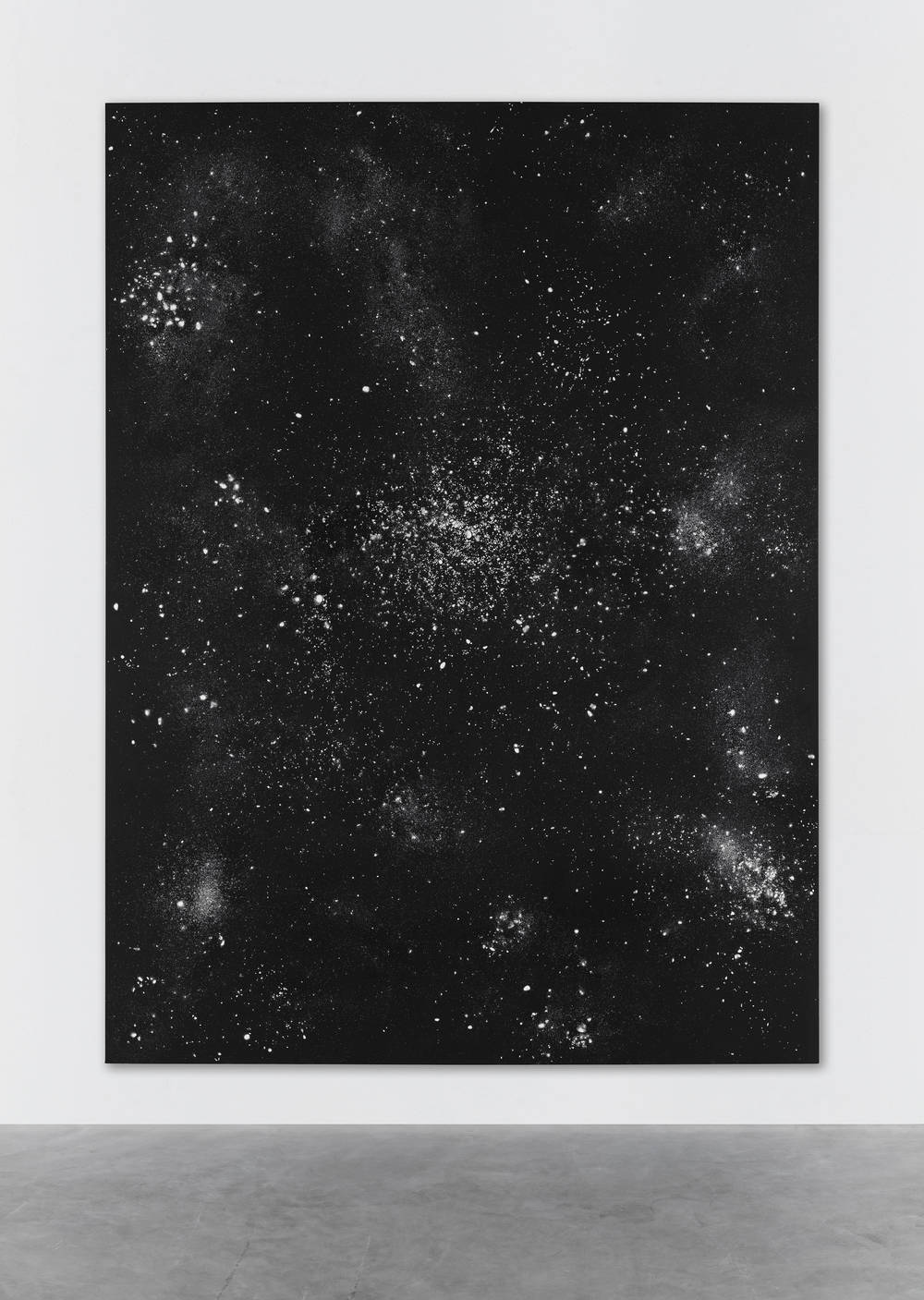
Spread across the floor are thirteen seated casts of nude dancers. Averted, self-absorbed, and possessing reduced individual features, they take on an anonymous universal identity, their passive expression reminiscent of Rondinone’s clowns. The sacral look and feel of the exhibition space is underscored by the mood of light emanating from three round colored glass windows, one of which is set directly into the wall of the Schirn. They consist of concentric circles with twelve Roman numerals and thus resemble a clock. Without hands, these time windows have been stripped of their original purpose, but rather convey timelessness and allude to the movement of light and of the earth.
The exploration of the relationship between culture and nature, permanence and transience, inside and outside, continues in the large installation made up of three series in the next room of the exhibition. Five amorphous, gray stone sculptures reveal clear references to Classical Modernism such as works by Henry Moore and Auguste Rodin. Loosely based on Chinese scholar’s rocks, whose creator is considered to be nature itself, the sculptures establish a connection between the spiritual and the natural worlds.
These works are complemented by black-and-white drawings on canvases primed with plaster. For the most part, they are studies of windows that seem like sketches of actual scenery, suggesting intimacy and privateness. A series of poems written directly on the exhibition walls reinforces these aspects. In contrast to graffiti or wall paintings the viewer has to step up close to read the “poems”. In this way, Rondinone creates an intimate situation between the work and the viewer. The wall installation “far away trains passing by”, made of white wooden boards, marks the transition to the next part of the exhibition.
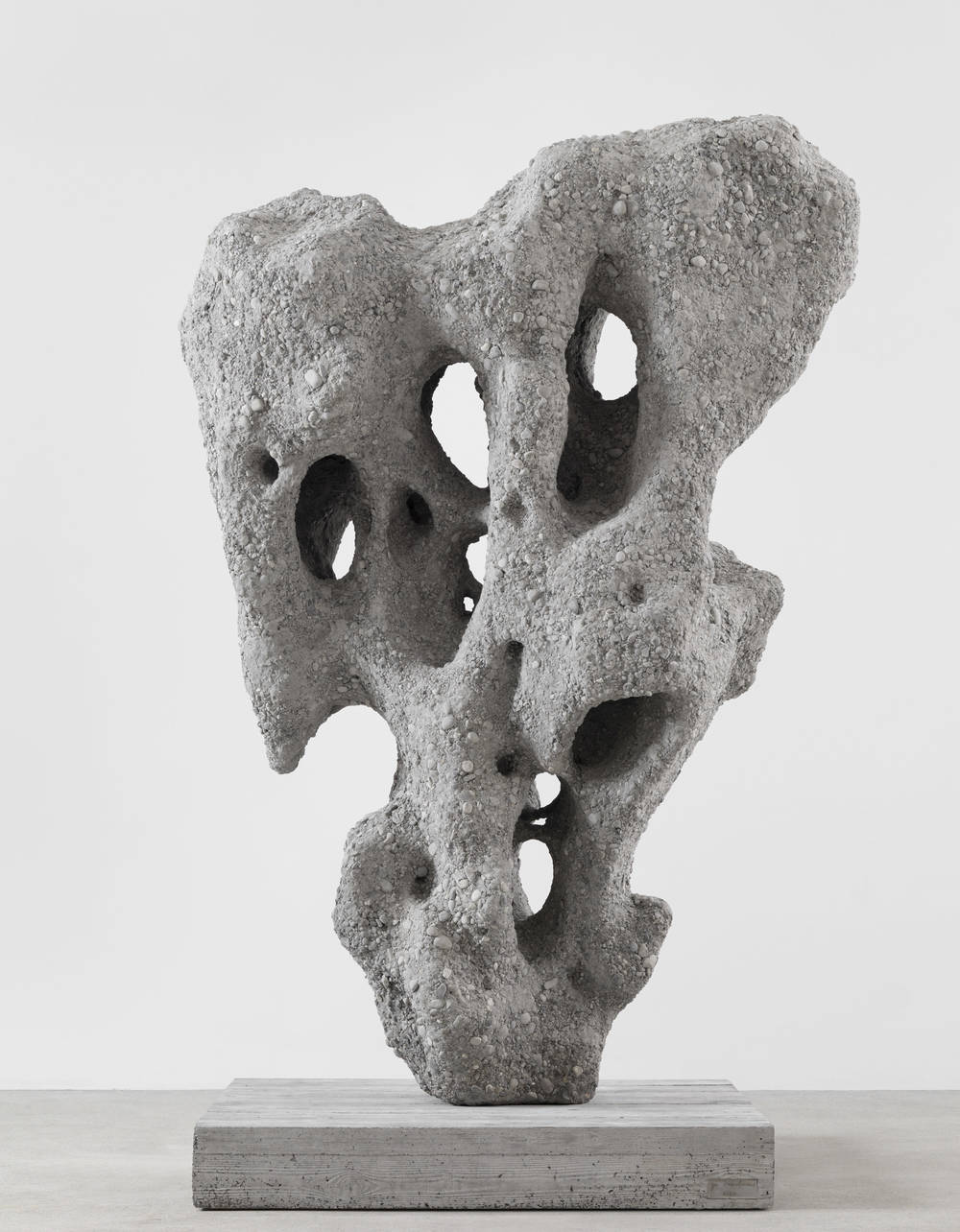
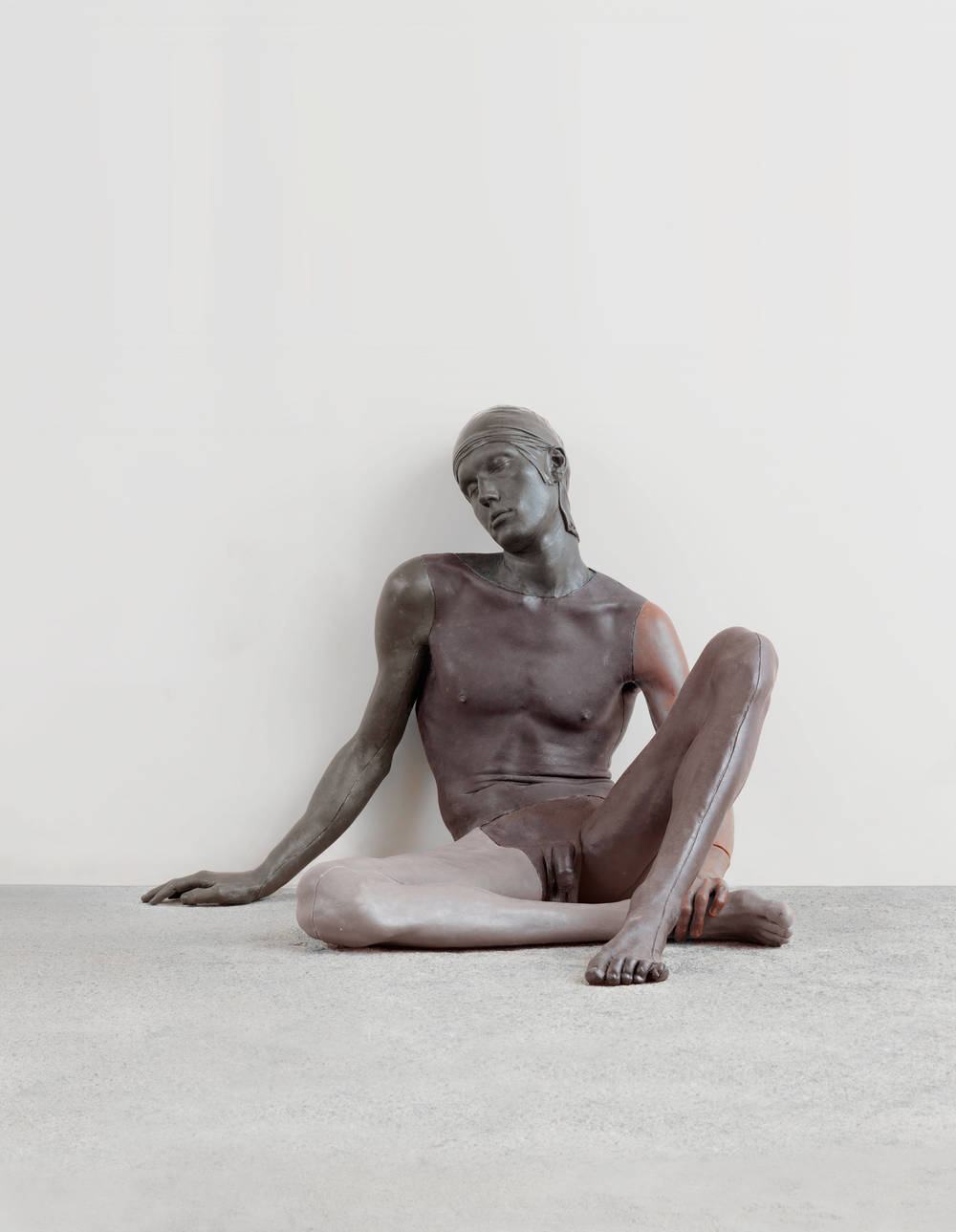
The film installation “it’s late and the wind carries a faint sound as it moves through the trees (…).” from 1998 fills the fourth room with blue light. The installation consists of twelve sequences presented on six screens in a continuous loop. This arrangement alone suggests the motif of the endless repetition of everyday human activity. A woman keeps entering a dark room; a man constantly moves a curtain back and forth.
From night to day, from darkness to light
Eight works with the title “pure sunshine” illuminate final room in radiant yellow. Also known as mandalas or target paintings, the circular images create the impression of movement with pulsating, vibrating contours, placing them in the tradition of Op Art. The snow machine in the room refers to the ever-recurring motifs of yesterday and today, of day and night, summer and winter. By day, white paper confetti falls quietly and silently like snow; each night, it is returned to the machine so that the cycle can begin anew the next morning. Finally, on the floor are lined up bronze sculptures in the form of apples and pears. They represent a standstill, a frozen moment in a life cycle, underscoring the transience of the individual object.
